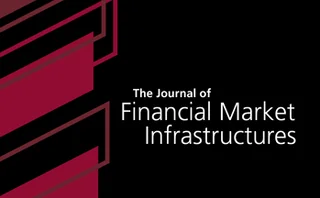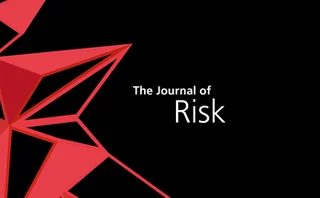Technical paper/Systemic risk
Cumulative accuracy profile curves for correlating collateralized debt obligations to systematic factors
This paper proposes a means to calibrate the correlation for paper issued by a collateralized debt obligation is included in a general credit portfolio of corporate bonds.
Measuring the systemic importance of Chinese banks: a comparison of different risk measurement models
Does the asymmetric exponential power distribution improve systemic risk measurement?
Insurance institutional shareholding and banking systemic risk contagion: an empirical study based on a least absolute shrinkage and selection operator–vector autoregression high-dimensional network
Systemic operational risk in the Australian banking system: the Royal Commission
The author investigates the Royal Commission into Misconduct in the Banking, Superannuation and Financial Services Industry and its most prominent cases, as well as detailing examples of operational risk events that the commission did not cover.
Risk contagion and bank stability: the role of credit risk and liquidity risk
The authors put forward a systemic risk measurement model and measure systemic risk in China's banking sector for the period 2013-18.
Technology risk management in fintech: underlying mechanisms and challenges
This study focuses on the foundational technology of fintech to address the challenges posed by its specific form of risk.
Time-varying tail dependence networks of financial institutions
In this paper time-varying tail dependence networks are constructed to investigate the complex interdependencies in the financial system.
Systemic risk of the Chinese stock market based on the mobility measures of the marginal expected shortfall
This paper applies the dynamic mixture copula model method and proposes a mobility measure of the marginal expected shortfall to depict the changing systemic risk in China’s mainland stock market and Hong Kong’s stock market.
A block-structured model for banking networks across multiple countries
This paper develops a block-structured model for the reconstruction of directed and weighted financial networks spanning multiple countries.
Three ways to improve the systemic risk analysis of the Central and Eastern European region using SRISK and CoVaR
This paper proposes three modifications to two well-established measures of systemic risk, SRISK and CoVaR.
A numerical simulation approach to study systemic risk in banking systems
The authors introduce a simple numerical algorithm to study banking systems subject to credit risk. The algorithm is based on a model that is completely defined by only two parameters.
Optimization of systemic risk: reallocation of assets based on bank networks
In this paper, the authors investigate the optimization of systemic risk based on DebtRank by considering two contagion channels: interbank lending and common asset holdings.
Structural systemic risk: evolution and main drivers
This paper analyzes how systemic risk structurally evolved between 2007 and 2017. The main contributions of the paper to the literature include the methodology, analysis and potential use for macroprudential policies.
Brazil’s BM&F in 1999: a central counterparty near-failure case?
The authors argue that, despite some concerns on systemic risk expressed by high-level Banco Central do Brasil officers, the (potential) defaults of Marka and FonteCindam would not have been sufficient to lead BM&F to a failure.
Network sensitivity of systemic risk
Here, we address the more general problem of how shock propagation dynamics depend on the topological details of the underlying network. To this end, we consider different realistic network topologies, all consistent with balance sheet information…
Detecting changes in asset co-movement using autoencoders
ARR aims to anticipate volatility patterns to provide signals for risk management and trading
Quantifying systemic risk using Bayesian networks
Creditworthiness of individual entities may offer an insight into systemic risk of financial markets
Supervisory stress testing for central counterparties: a macroprudential, two-tier approach
This paper examines the role of supervisory stress testing of central counterparties (CCPs). A key message is that the design of supervisory stress tests (SSTs) should be tailored to CCPs’ roles, risk profiles and financial structures.
Measuring the systemic risk of China’s banking sector: an application of differential DebtRank
This paper investigates the systemic risk of China’s banking sector via network analysis and differential DebtRank from 2007 to 2016.
Default cascades and systemic risk on different interbank network topologies
This paper examines the relationship between the topology of interbank networks and their ability to propagate localized, idiosyncratic shocks across the banking sector via banks’ interbank claims on one another.
Who pays? Who gains? Central counterparty resource provision in the post-Pittsburgh world
In this paper, the authors develop a conceptual framework to examine whether the regulatory changes since the Pittsburgh Summit could be a catalyst for reconsidering the structure of clearing houses.
The centrally cleared interest rate derivatives market: how are clients changing the risk perspective?
This paper analyzes counterparty relationships within both direct (house) and client clearing in the interest rate derivatives market in the European Union.





